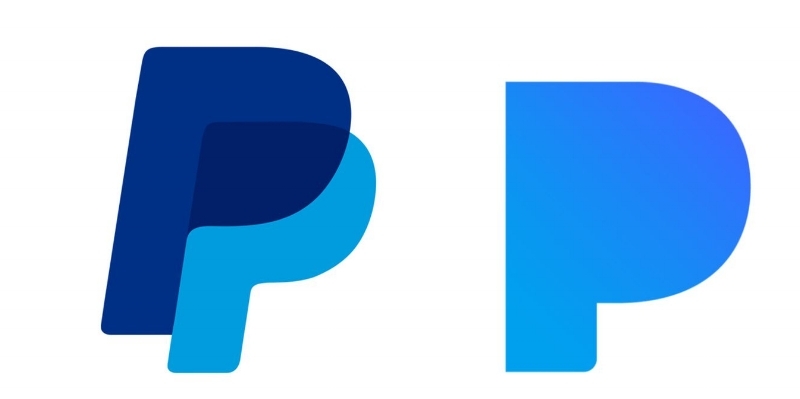
Logos might translate to money for luxury brands like Louis Vuitton and Chanel, whose logo-laden bags and cosmetics bring in a huge portion of their annual revenues, but for some brands, color is equally, if not more, important. Christian Louboutin has made its name – and sold a lot of shoes – based on its Chinese red soles. Tiffany & Co. is synonymous with its robin’s-egg blue, UPS for its brown, and Gap for its navy blue.
Also in the mix of brands attempting to make their marks in an increasingly crowded marketplace by way of color: PayPal and Pandora. The payment processing company and the music streaming service have been sparring over color – the color blue, to be exact – which plays a prominent role in their respective logos. PayPal (logo, above left) filed suit against Pandora (logo, above right) after the music streaming service debuted a new logo last year, consisting merely of a blue-hued “P.”
According to the suit, which was filed in May in the U.S. District Court for the Southern District of New York, in addition to adopting the simplified “P,” Pandora’s new logo is problematic – and allegedly infringing – due to its use of “the same deep-blue color range.” PayPal asserted in its complaint that one of the “hallmarks” of its logo – in addition to its “minimalist look and feel [and] sans serif font,” is “the distinctive blue color palette.”
In addition to citing a handful of tweets from consumers that made mention of the striking similarity between the two brands’ logos and the confusion they frequently experienced in distinguishing the logos, PayPal called attention to Pandora’s use of the color 11 different times in its complaint. PayPal pointed to “Pandora’s familiar deep-blue color range,” which is likely to confuse consumers as iPhone apps’ logos – and their color schemes – “play the critical role of serving as an identifier on customers’ mobile devices, guiding them to the PayPal payments platform.”
As of this week, the parties managed to settle their color-centric litigation out of court. While the terms of the settlement agreement are confidential, it would not be all that surprising if Pandora agreed to tweak its logo to prevent further confusion amongst consumers, although any such changes were not in play at the time of publication.
Regardless of the outcome, however, is the importance that color plays in a brand’s enduring identify and its marketing strategy. In much the same way as a trademark serves as an immediate indicator of the source of a product or service for consumers, color can play serve an important source-identifying feature. Similarly, just as many brands have been able to monetize the recognizability and appeal of their trademarks, they are increasingly looking to color for the very same benefits.







